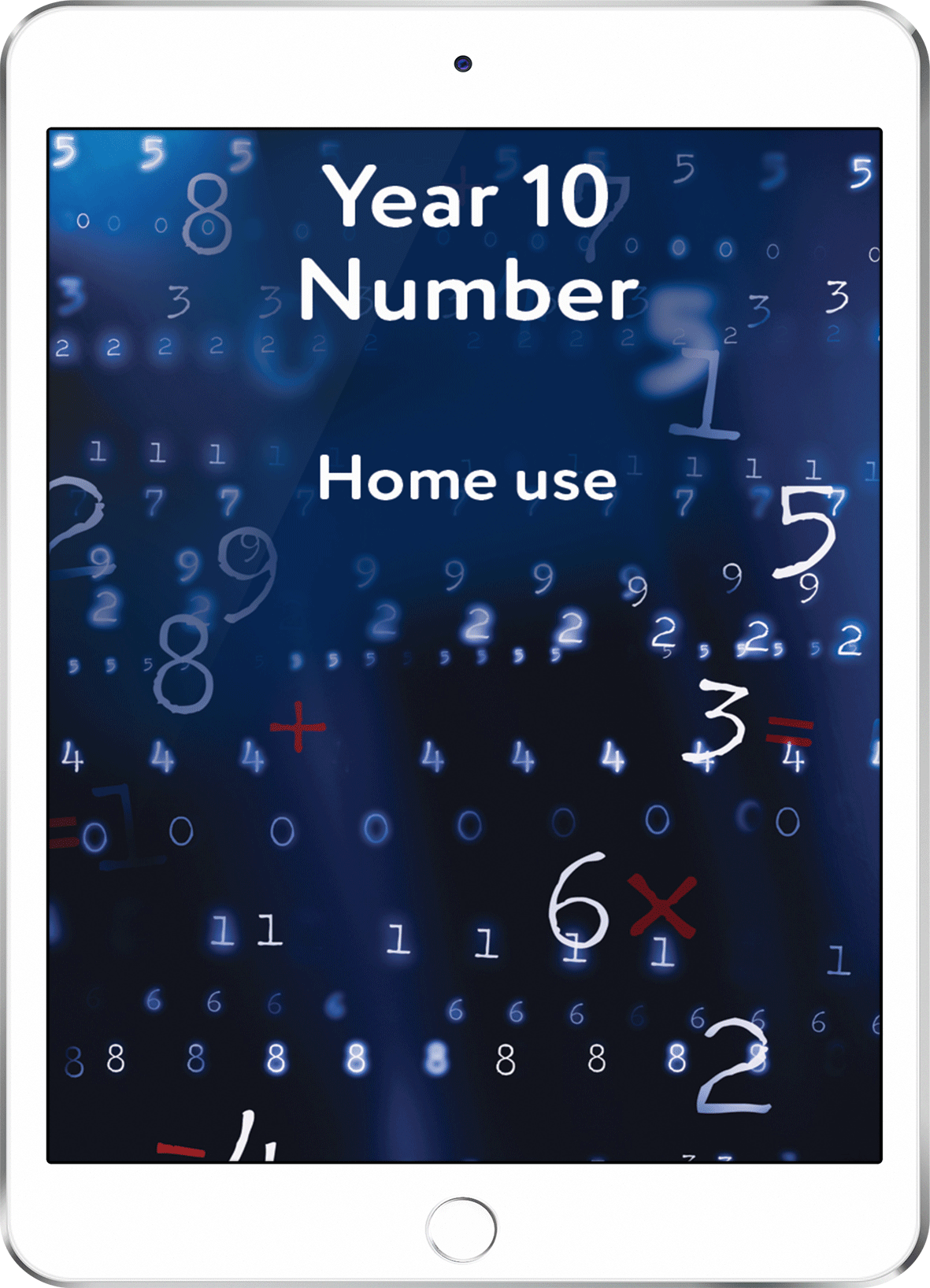Year 10 Number - Home Use
Year 10 Number - Home Use
LearnWell Digital
This version of the resource is for home use. Students work independently through the resource. If you are a teacher, you should purchase the school use version.
Couldn't load pickup availability
Numbers are so much a part of our everyday lives, they’re something we often take for granted. In this resource, though, you’ll have lots of chance to think about numbers a bit more deeply. That’s because understanding numbers, their relationships to one another, and how they interact when we perform all the basic maths operations like addition, subtraction, multiplication and division, is the key to understanding and mastering all other areas of maths!
What you'll learn
This course is broken into nine sections.
1. Place value and number lines
In this section you’ll revisit the basics of place value and number lines, before getting in some practice at using them to order integers, as well as locate fractions and decimals on number lines.
2. Prime numbers, least common multiples and greatest common factors
Here you’ll really get to grips with the importance of prime numbers, and how these can be used to find least common multiples and greatest common factors. These are skills that will really come in handy later when you’re working with fractions.
3. Order of operations
In this section you’ll review what to do when an expression has more than one mathematical operation in it, using the conventions of BEDMAS. This is a very important skill to have mastered for your work in all areas of maths, especially algebra.
4. Making estimations
Here you’ll be introduced to significant figures – what they are, how you round a number off to a set number of significant figures and how this process can be used to make estimations.
5. Fractions
After revising the basics, you’ll get the chance to have lots of practice doing arithmetic with fractions – multiplying, dividing, adding and subtracting. You’ll also get the chance to make sure you can find equivalent fractions, and can confidently convert from mixed numbers to improper fractions and back again.
6. Ratios
This section starts with some revision of the most basic forms of ratio between two parts, before extending your learning into larger ratios (involving more parts), sharing quantities involving larger ratios, and increasing or decreasing a quantity while keeping a ratio constant.
7. Decimals
After a short refresher on decimals and place value, plus some practice on multiplying and dividing with decimals, you’ll be introduced to the difference between terminal and recurring decimals.
8. Working with exponents and roots
In this section you’ll first revisit what exponents and square roots are. Then you’ll explore positive and negative powers of 10 to gain an understanding of how they relate to place value. Finally you’ll see how this knowledge can be used to convert between regular number form and scientific notation, which is a form used to write really large or really small numbers so they’re easier to visualise and work with.
9. Percentages and percents
In this final section of the resource you’ll get a quick refresher on percents and percentages – what they are; how we convert between decimals, fractions and percentages; and how to find percentages of an amount. Then you’ll finish with learning how to calculate percent change, how to increase and decrease an amount by a percent, and how to find the original cost given a percent change and a marked-up or marked-down price.
LearnWell Digital resources bring you the same great learning as in our books - but in an interactive digital format. They are accessed by using the iQualify online learning platform, where you’ll find all your digital resources together in one place.
You can find out more on the information page about our LearnWell Digital resources.

